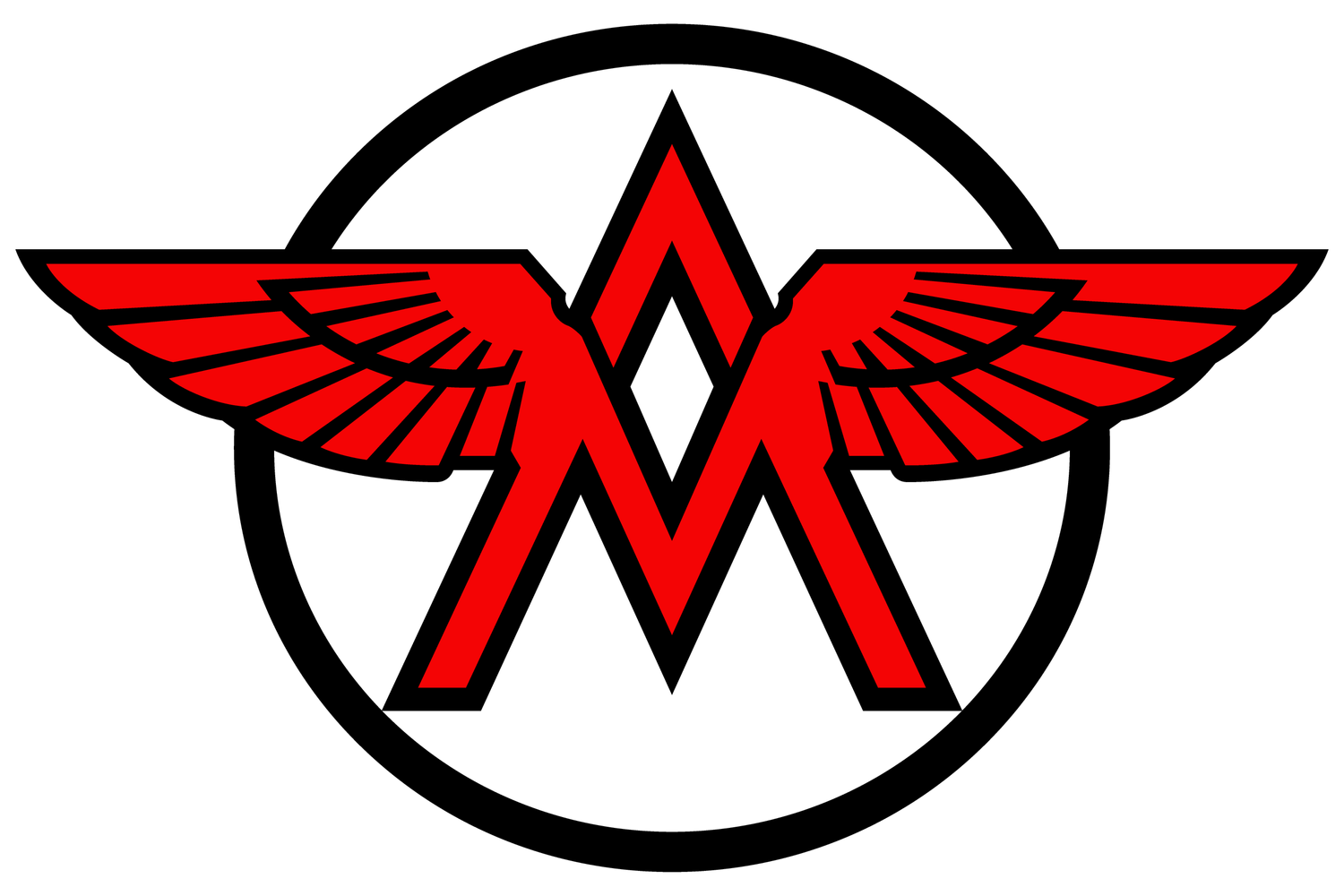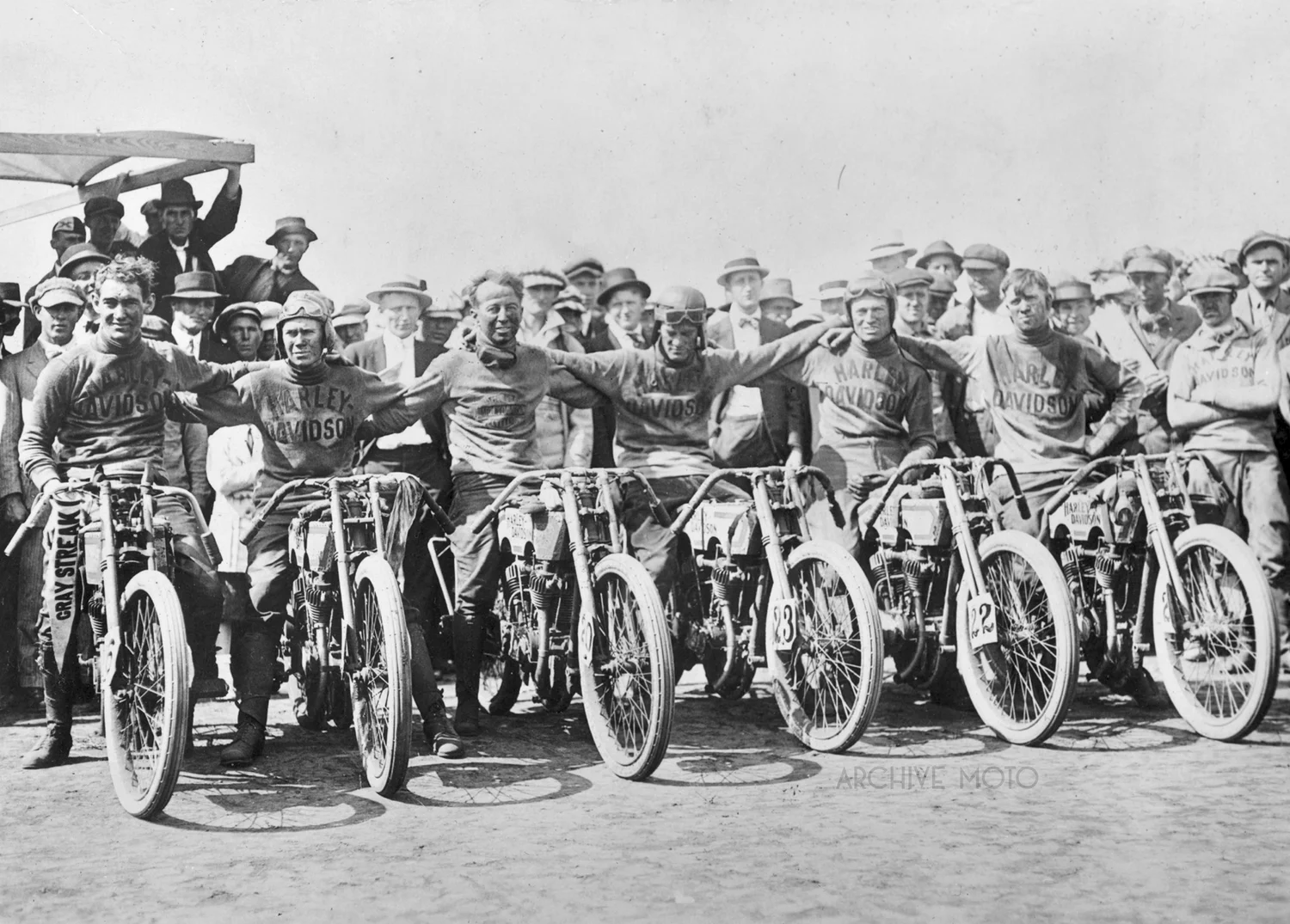Edward Jeffra Brinck, a man so dapper that he more consistently looks like a Hollywood playboy posing for a photo-op rather than a rough and tumble prohibition era AMA Champion. His well kept appearance is misleading though, as Eddie was one of the elite few who began his motorcycle racing relationship with Harley-Davidson before the outbreak of WWI and continued to snatch up national championships throughout the 1920’s.
Early in life Brinck spent his time tinkering, familiarizing himself with all things mechanical, his interests eventually leading him to a career as an engineer. As the Great War chewed through Europe, the 20 year old from Dayton landed a job as a performance motor engineer and wind tunnel technician at the US Army’s experimental aviation department at McCook Field. It was there that Brinck befriended fellow employee and pioneer racing icon Maldwyn Jones. The two shared a fascination with engine tuning and efficiency and Jones soon began to mentor Brinck on flat tracks around Ohio each weekend. It was Jones, who had only recently been recruited into the might Harley-Davidson factory program that convinced the Motor Co. to bring his protege onboard as well, the condition being that Jones would be held responsible for Brinck’s machine. However, the pair’s proficiency for getting the most out of the small, half-mile motors resulted in the factory allowing them to tune their own racing motors, even sending them components directly, a rare privileged within the Class A powerhouse team.
A dirt track racer in the age of the massive board speedway’s, Brinck didn’t share in the same limelight that the stars of the Wrecking Crew did in the early 20’s, he even jumped into the Indian camp for a bit, but Brinck continued wringing out his little singles in the dirt. By the mid-1920’s, as the big money days of the Class A era began to fade Brinck, a flat track wizard stepped into his glory days. Running toe to toe with legendary racers like Jim Davis, Ralph Hepburn, and Joe Petrali, Brinck proved himself a brilliant competitor. In the fall of 1925 at the AMA Nationals in Syracuse, NY Brinck won the first of many national titles, even becoming an international record holder when he sailed to Australia to compete in the winter of 1926.
Upon his return to the states his old friend Maldwyn Jones, the man responsible for his racing career suggested the it was time for Brinck to join him in retirement, offering him a position at the Schebler Company. However, as the story too often unfolds with these early racing icons, Brinck turned down the offer at a slower paced life opting instead to continue chasing down victory, a decision that proved fatal. On August 13, 1927 while competing in the AMA Nationals at Springfield Brinck’s front tire gave out sending him down at full speed. Joe Petrali, who was trailing just behind collided with the pile in front of him injuring Petrali, but the debonaire racer from Dayton with the brilliant mind for motors died as a result of injuries sustained.
Here is Eddie Brinck, the gentleman star of the dirt and one of the small racing motors that he loved, a 1927 Harley-Davidson 30.50 ci OHV “Peashooter.”





